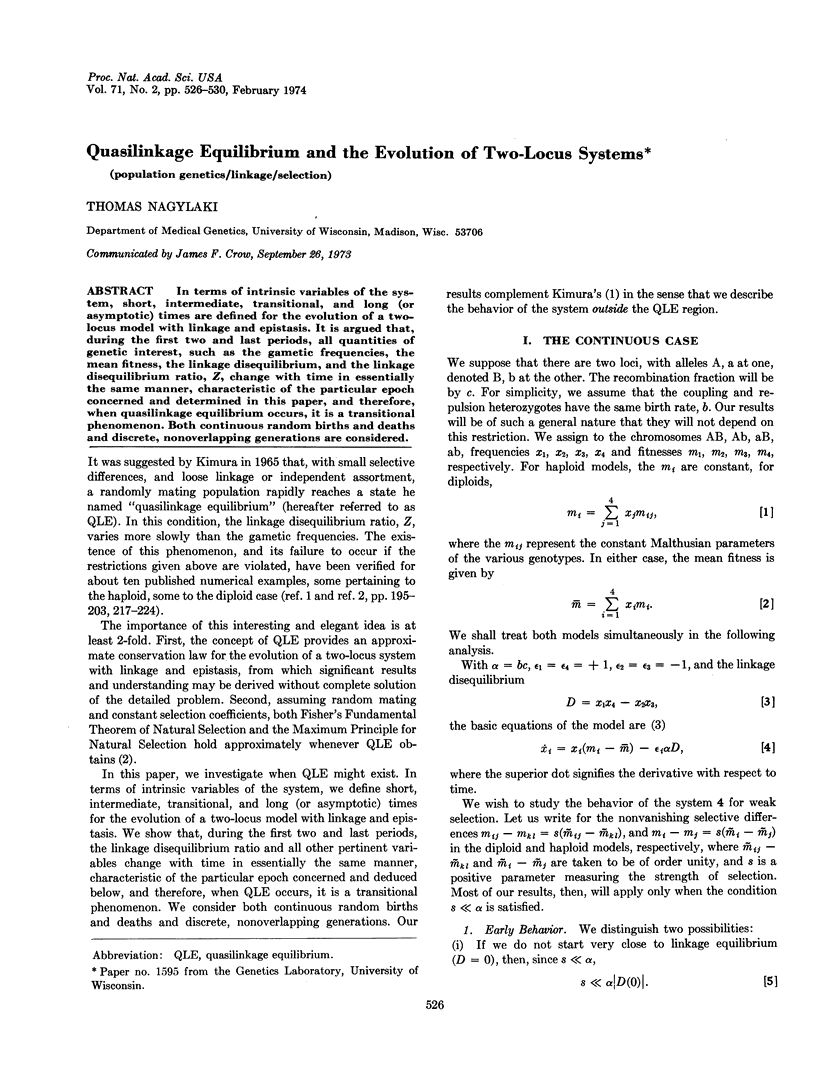Abstract
In terms of intrinsic variables of the system, short, intermediate, transitional, and long (or asymptotic) times are defined for the evolution of a two-locus model with linkage and epistasis. It is argued that, during the first two and last periods, all quantities of genetic interest, such as the gametic frequencies, the mean fitness, the linkage disequilibrium, and the linkage disequilibrium ratio, Z, change with time in essentially the same manner, characteristic of the particular epoch concerned and determined in this paper, and therefore, when quasilinkage equilibrium occurs, it is a transitional phenomenon. Both continuous random births and deaths and discrete, nonoverlapping generations are considered.
Keywords: population genetics, linkage, selection
Full text
PDF




Selected References
These references are in PubMed. This may not be the complete list of references from this article.
- Feldman M. W., Crow J. F. On quasilinkage equilibrium and the fundamental theorem of natural selection. Theor Popul Biol. 1970 Nov;1(3):371–391. doi: 10.1016/0040-5809(70)90052-3. [DOI] [PubMed] [Google Scholar]
- Kimura M. Attainment of Quasi Linkage Equilibrium When Gene Frequencies Are Changing by Natural Selection. Genetics. 1965 Nov;52(5):875–890. doi: 10.1093/genetics/52.5.875. [DOI] [PMC free article] [PubMed] [Google Scholar]


